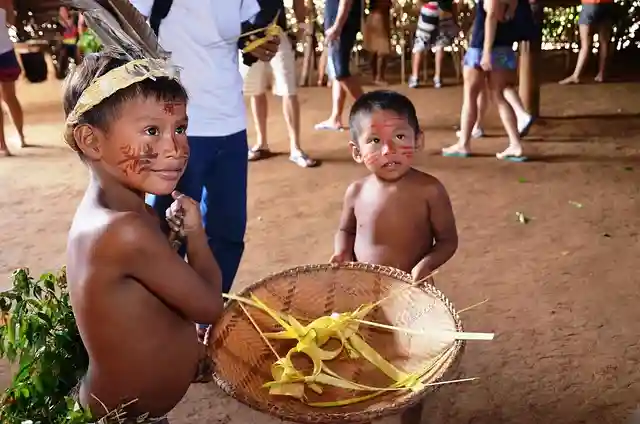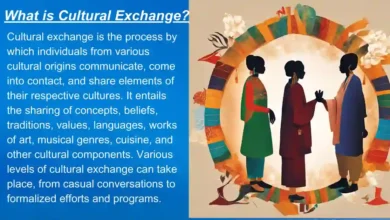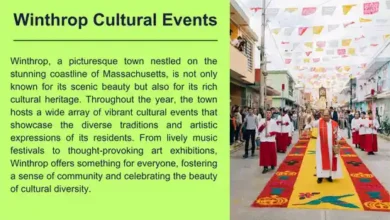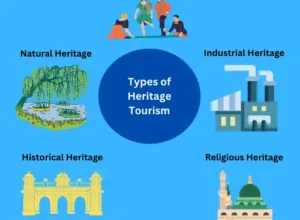
What is Indigenous Tourism and Why is it Important?
Indigenous tourism is a trip that benefits both visitors and host communities, going beyond simple travel experiences. It gives visitors a chance to interact with a diverse array of indigenous cultures, traditions, and lifestyles. It simultaneously promotes intercultural understanding while empowering indigenous communities economically and culturally. In this article, we look at the diverse values of indigenous tourism, including initiatives to preserve culture, promote sustainable development, and promote peace. Explore the reasons why indigenous tourism is an important and transformational force in the modern world.
What is Indigenous Tourism?
Indigenous tourism, often referred to as Native tourism or Aboriginal tourism in some places, describes travel experiences and activities that are based on Indigenous cultures, traditions, and heritage. Indigenous people or communities share their distinctive cultural practices, history, artwork, rituals, and way of life with outsiders. While respecting their traditions and the place they live in, indigenous tourism allows visitors to interact with and learn from Indigenous people.
Importance of Indigenous Tourism
Indigenous tourism must be practiced responsibly and with respect, it is crucial to mention. Indigenous communities should play a significant part in the creation and management of these tourism initiatives, and safeguards should be taken to ensure the preservation of their rights, territory, and cultural legacy. Indigenous tourism’s long-term success and beneficial effects on Indigenous people and their cultural heritage depend on ethical and ecological practices.
Here are some reasons why Indigenous Tourism is important.
- Culture Preservation
- Economic Empowerment
- Self-determination and Empowerment
- Education and Awareness
- Sustainable Development
- Cultural Exchange
- Tourism Diversification
- Healing and Reconciliation
Culture Preservation
Indigenous communities’ cultural traditions and legacy are preserved and revived by indigenous tourism. These communities can transmit to future generations their traditions, languages, and cultural knowledge through tourism-related activities.
Economic Empowerment
The economic benefits of indigenous tourism to indigenous communities can be substantial. It contributes to the alleviation of poverty and the improvement of living conditions by bringing in money through tourism-related activities, providing jobs for locals, and assisting small companies.
Self-Determination and Empowerment
Indigenous communities have more influence over their economic growth as a result of owning and operating local tourist ventures. It promotes self-determination and sovereignty by enabling them to make choices that are consistent with their values and priorities.
Education and Awareness
Visitors are educated about Indigenous peoples’ history, challenges, and contributions through indigenous tourism. It fosters intercultural understanding, dispels prejudices, and increases public knowledge of concerns pertaining to Indigenous people.
Sustainable Development
Numerous Indigenous cultures have a strong bond with their natural surroundings. Indigenous tourism frequently places a focus on environmentally beneficial and sustainable practices, helping to save vulnerable ecosystems and advance responsible travel.
Culture Exchange
Between Indigenous and non-Indigenous people, indigenous tourism promotes cultural interaction and dialogue. It encourages intercultural harmony, respect for difference, and appreciation
Tourism Diversification
Indigenous tourism broadens the region’s tourism offers, bringing in more tourists looking for distinctive and genuine experiences. In turn, this helps local economies and the tourism sector as a whole.
Healing and Reconciliation
Indigenous tourism occasionally aids in efforts to achieve reconciliation by recognizing previous offenses and promoting healing and understanding between Indigenous and non-Indigenous peoples.
How does Indigenous Tourism Promote Cultural Preservation?
It is significant to note that, depending on how it is run, the effect of indigenous tourism on cultural preservation can change. In order to guarantee that tourism positively helps cultural preservation without resulting in exploitation or cultural commodification, responsible and culturally sensitive tourist practices that entail the input and consent of indigenous populations are crucial. To truly and permanently effect cultural preservation, tourist efforts must be in line with the values and preferences of the indigenous communities they involve.
Indigenous tourism encourages cultural preservation in a number of different ways.
- Cultural Showcasing
- Transmitting Oral Traditions
- Craft and Traditional Art
- Language Revitalization
- Conserving Culture Site
- Encouraging Traditional Practices
- Educational and Storytelling
- Generating Economic Resources
- Fostering Community Pride
- Creating a Market for Cultural Product
Cultural Showcasing
Indigenous communities can demonstrate their cultures, customs, and ways of life to a larger audience thanks to tourism. The community feels proud of itself and is inspired to keep up old customs by this act of sharing their past.
Transmitting Oral Traditions
Many indigenous societies significantly rely on oral traditions, such as storytelling, music, and dance, to transmit their history and values. Tourist participation in these activities highlights the significance of these customs and promotes their preservation.
Craft and Traditional Art
Traditional products and artwork are frequently sold as part of indigenous tourism. This gives native craftsmen a means of support and encourages them to keep making these products, which are frequently closely associated with cultural meaning and history.
Language Revitalization
It can encourage younger generations to learn and utilize their native languages by creating a demand for them to be spoken and understood. Cultural identity must be preserved through language a rebirth.
Conserving Culture Sites
Cultural and historical places are frequently visited as part of indigenous tourism. These visits can encourage the upkeep and safeguarding of these locations, preventing them from deteriorating or being forgotten.
Encouraging Traditional Practices
Indigenous tourism frequently places an emphasis on sustainable and conventional practices, including eco-tours or nature walks led by indigenous authorities. As a result, traditional ecological knowledge is encouraged to be preserved.
Education and Storytelling
This educational aspect not only informs visitors but also underlines the significance of keeping these traditional elements. Tour guides and community members frequently share stories and insights about their culture and history with tourists.
Generating Economic Resources
Indigenous tourist revenue can be put back into programs aimed at preserving cultural traditions. Funds may be allocated for cultural activities, language courses, and the recording of cultural customs.
Fostering Community Pride
Successful indigenous tourism projects can inspire the community to actively participate in cultural preservation efforts by instilling a sense of pride and accomplishment among its members.
Creating a Market for Cultural Product
The tourism industry’s demand for indigenous goods such as traditional clothes, jewelry, and artwork gives craftsmen a stable source of income and encourages them to keep making these products.
Conclusion
Indigenous tourism acts as a dynamic link between cultures, protecting history, empowering communities, and promoting understanding. Both tourists and the native hosts benefit from it. Indigenous tourism is a transforming force in our contemporary society due to its support for cultural preservation, economic empowerment, sustainability, and intercultural interaction. We discover not just a window into the past but also a way forward to a more connected and peaceful future as we continue to investigate the various traditions and legacies of indigenous peoples.
You may like:
What is a Resort? And Its Types




